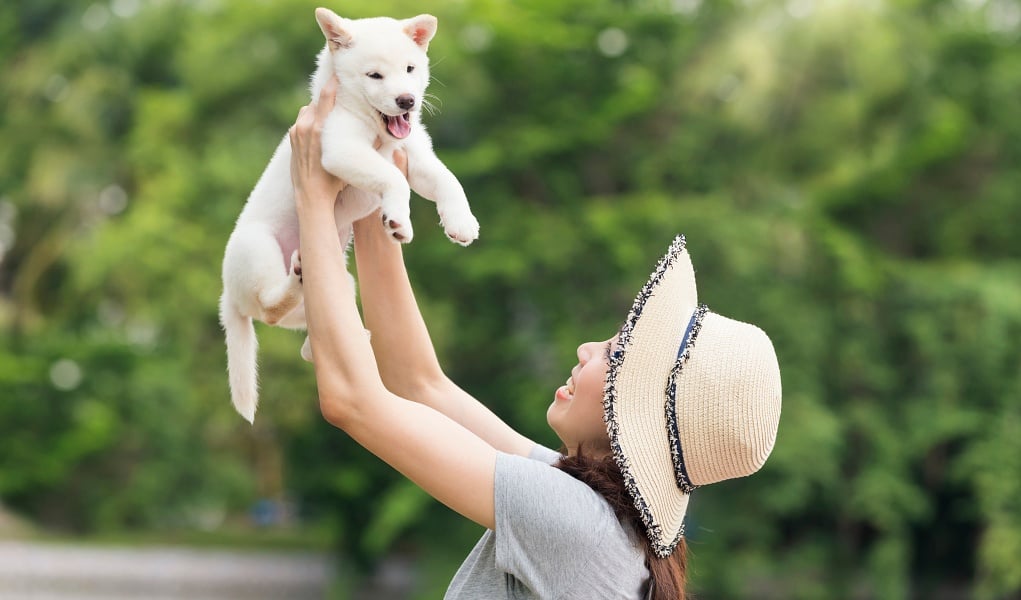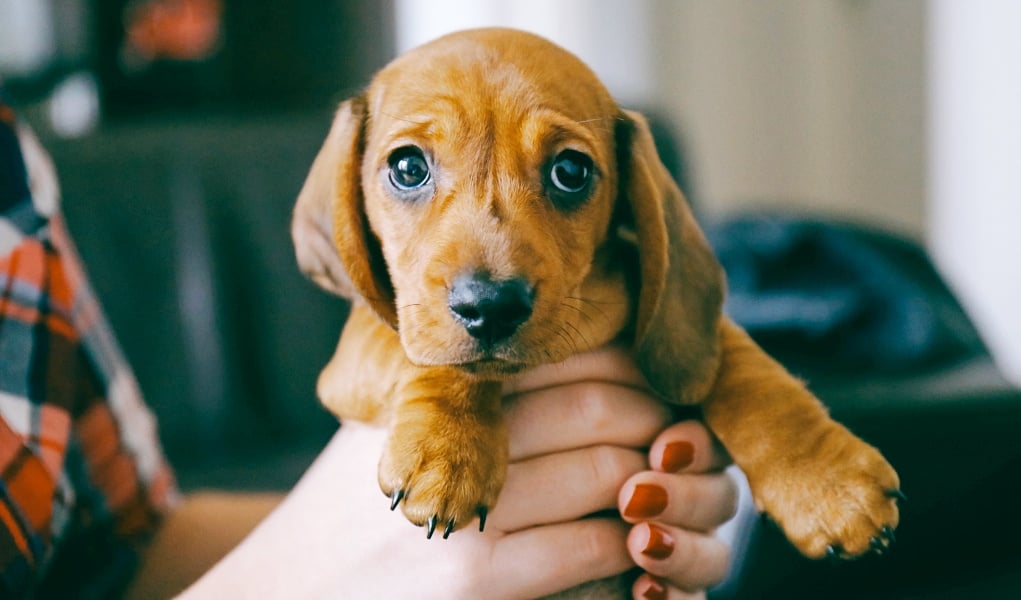If you've recently adopted a puppy or you're eagerly awaiting the arrival of your new furry family member, there are a few things that every puppy parent should know. You've probably spent countless hours thinking about what you're going to name your puppy and all the fun things that you can do with her. But, before you bring your pup home, there are a few things you need to know.
First of all, you must remember that a lot of understanding and patience will be required on your part. Your new four legged friend will most likely have gone through some stress because she was separated from her canine family and is moving into a new environment with lots of people, smells and sounds that she has never experienced before.
If you go into this new adventure with strict expectations, you're sure to get frustrated. No matter what you've heard from family members and friends, this new experience is going to be unique and exciting. Every puppy is different, with their own personality and an interesting set of challenges.
Like humans, some puppies are more laid back and easy going while others are high strung and hyper. It's best to go into this new adventure with an open mind, patience and a sense of adventure. Don't set your expectations. Get to know your pup and keep these things that every puppy parent should know in mind. It's sure to be a fun and exciting experience for both you and your new furry family member!
7 Things Every Puppy Parent Should Know
 1. Create a routine
1. Create a routine
A routine helps a puppy get to know your family, your home and your lifestyle. Do your best to keep meal time, play time and daily walks at about the same time each day. You will also need to create a structured sleep schedule for your pup. He should go to bed around the same time every night and wake up around the same time every day.
2. Create a puppy space
Crate training is the perfect way to keep your pup safe when you’re not able to keep an eye on him. If you don’t want to crate train, create an area in your home that is setup specifically for your new pet. The area should be safe and free of any hazardous objects that the puppy can reach.
Puppy playpens are another great way to keep your dog contained and safe when you’re not able to supervise him. Giving your puppy his own space to retreat to when he’s tired, over-stimulated or nervous is part of creating a safe environment for him. It gives your new pet a place to go that is all his own. Every member of your family needs to understand that this is the dog’s place to be alone and they need to leave him be when he’s in his crate/puppy space.
For more information on crate training a puppy, check out these resources:
- Crate Training A Puppy: 20 Tips and Tricks
- Dog Crate Sizes: How To Size A Dog Crate for A Perfect Fit
- Dog Whining In Crate: 5 Reasons Why and What To Do
- Dog Pees In Crate: What To Do
3. Designate a “potty place”
When you take your puppy outside to go to the bathroom, take him to the same place each time. A dog’s sense of smell is over 10,000 times greater than a humans. Your new dog will be able to smell the potty area as you’re walking towards it. He’ll quickly associate this area as a designated bathroom zone, and this will make potty training your pup much easier.
4. There is no such thing as too much PLAY!
Playing with your puppy will help to grow and foster the bond between the two of you. It will also stimulate your puppy both mentally and physically. Puppies seem to have endless energy, and structured playtime is the best way to burn this energy in a safe and healthy way.
 5. Training begins immediately
5. Training begins immediately
Puppy training should begin immediately. As soon as you pick up your pup, the training needs to start. Do not let your puppy chew on your fingers on the car ride home. Potty training needs to begin as soon as you get home. If you plan to crate train your puppy, it needs to start on Day One.
Many pet owners want to spoil their new pet for the first few days, but the truth is that will begin creating unwanted behaviors. If you feed your puppy table scraps for the first couple of days that he’s home, he will quickly develop a habit of begging. If you allow him to sleep in your bed for the first couple of nights, crate training is going to be extremely challenging.
You should have a training plan set before you adopt your new pet. That will ensure that you can begin consistent training as soon as your new bundle of joy is officially yours.
6. Socialize, socialize, socialize
Your puppy needs to spend time with other humans, dogs, cats and any other animals that you want him to get used to. The earlier your puppy is socialized, the easier the process will be.
Like small children, most young puppies haven’t learned to be wary of strange humans/animals. This makes socializing them very easy. Older dogs that have not been exposed to many humans or other animals are more likely to be afraid (and possibly aggressive) when meeting new people/animals.
7. Groom often
The more often a puppy is handled, the more used to it he will become. If you begin grooming your dog when he’s young, he will be used to being handled in that way. If you clip your puppy’s nails, he’ll get used to having his paws touched and his toes separated. If you brush him, he’ll get used to the feel of the brush.
Getting your puppy used to having his teeth brushed, ears cleaned, hair cut, etc… will make grooming him when he’s full grown a very simple task. If you wait until your dog is older, he will be fearful of the grooming supplies and uncomfortable/anxious about the entire grooming process.
The most important thing you need to do when you bring your puppy home is to spend plenty of time with her until she gets used to the place, new things, new people and even yourself. If at all possible, bring the puppy home when you can spend a few days with her, such as a Friday afternoon, or possibly take a couple of days off work. Always be patient with the puppy and know that her primary aim is only to please and love you.
READ NEXT: 26-Step Checklist for Adopting a New Adult Dog or Puppy












